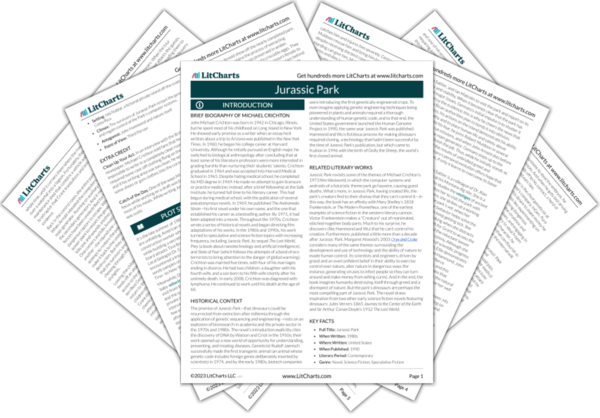Hammond spends a lot more time worrying about safely retrieving the dinosaurs than finding the missing guests—including his grandchildren. He shows little concern for human health or safety, especially when compared to his monetary investment in the park and his hopes for the vast fortune he thinks it will make for him. Notably, as the only park employee with extensive experience of predatory animals (Dr. Harding’s expertise is with birds, not apex predators), and thus with a sense of how little control humans actually have over events in the wild, Muldoon is the only park employee willing to take a stand against Hammond.


